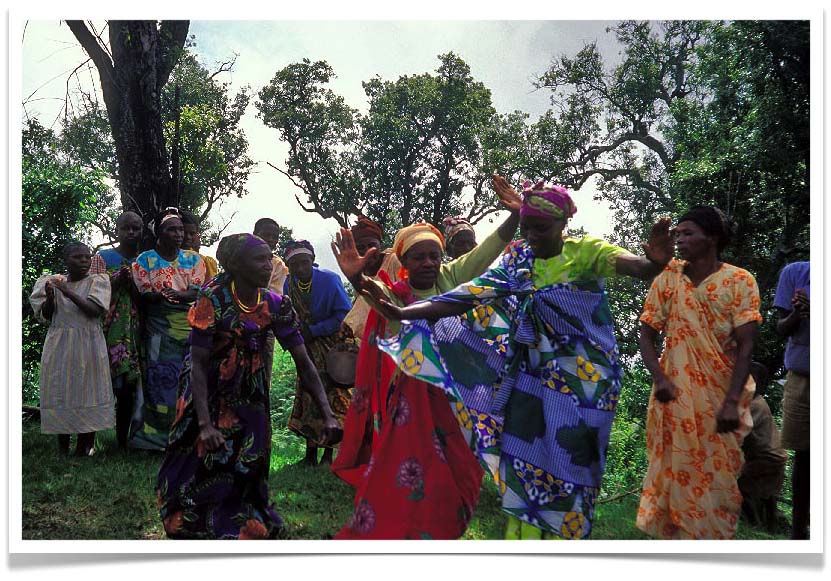Bwindi Impenetrable Forest (From the Archive)
 Tuesday, January 20, 2015 at 9:57AM
Tuesday, January 20, 2015 at 9:57AM 
Bwindi Impenetrable Forest. The sharp boundary between the park and the agricultural fields reflects the continual tension between forest conservation and local livelihoods in the region.

In the Bwindi forest. That's me in the left foreground. That's a silverback mountain gorilla (Gorilla beringei beringei) shown inside the white circle. A large female is also visible in the lower right of the image. [NOTE: Both images are scans from slides; the second one was taken by Chris Davey]
In October of 2001, Tony Cunningham and I did a workshop on ecology and resource management for the wardens and park staff at the Bwindi Impenetrable Forest in southwestern Uganda. About half of the world's population of Mountain Gorillas lives in these forests. After finishing the workshop, the park managers graciously allowed us to accompany a team of Batwa trackers who had been following a group of gorillas for several months. The trackers were working to gradually habituate the gorillas so that they could be observed and studied by scientists. After several hours, we located the study group and were able to get unbelievably (uncomfortably) close to some of the most elusive, threatened, and noble creatures in the world. [NOTE: Although I appreciate the potential scientific benefits of habituation, I question the logic of training gorillas to not be afraid of the one thing that they definitely should fear, i.e. human beings.











